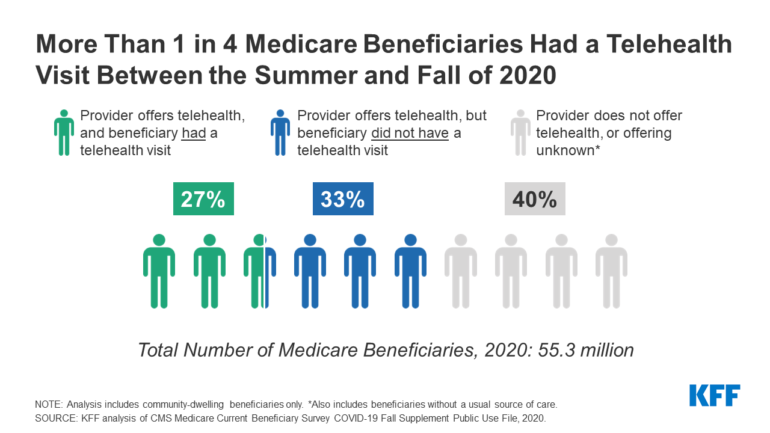A study led by researchers at the Johns Hopkins Bloomberg School of Public Health found that, on average, patients participating in an initial telehealth consult for a new health condition did not require more unplanned hospitalizations or follow-up emergency department visits within 14 days of their initial consult compared with patients making an initial in-person visit.
This was the case for 18 out of 21 conditions analyzed in the study, including all chronic care conditions—such as asthma or hypertension—and all non-respiratory acute conditions such as kidney infections or convulsions. The three acute conditions where emergency department use was higher for telehealth patients were upper respiratory infections, bronchitis, and pharyngitis (sore throat).
For their analysis, conducted with collaborators at Blue Health Intelligence and the Digital Medicine Society, the researchers drew from a cohort of over 40 million privately insured patients under the age of 65, including children, during the early phase of the COVID-19 pandemic, from July to December 2020.
In the case of consults for acute respiratory conditions such as bronchitis or upper respiratory infections, patients with an initial telehealth visit were significantly more likely to require a follow-up visit to an emergency department. In cases involving a probable diagnosis of bronchitis, telehealth patients were 1.18 times more likely than those initially seen in person to go to an emergency department and 1.23 times more likely to require a return visit to see the doctor again. A significant number of patients with acute respiratory conditions who were seen virtually during the study period required in-person, follow-up visits, likely due to suspected COVID-19 consults.
The study was published online April 26 in JAMA Network Open.
“These findings suggest that the concern that patients seen virtually will need to return for in-person follow-ups more often than those seen in person was unfounded in most cases,” says the study’s senior author, Jonathan Weiner, DrPH, co-director of the Center for Population Health Information Technology and professor in the Bloomberg School’s Department of Health Policy and Management.
The pandemic significantly shifted routine health care in the U.S. In the first phase of the pandemic, from March to June of 2020, regular health care appointments and screenings were put on hold, according to a 2021 study led by Bloomberg School researchers. During this time frame, telehealth consults increased considerably and remained constant—about 17 percent of all outpatient care—as an alternative to in-person visits.
The new study looked at the second half of 2020, when vaccines were not yet available, in-office visits were resuming, telehealth visits were continuing, and COVID was still widespread. For the study, the research team used anonymized health insurance data to analyze over 200,000 new consults seen via telehealth and over 900,000 consults seen in person. The claims data for the study were provided by Blue Health Intelligence, an independent licensee of the Blue Cross Blue Shield Association.
During the July–December 2020 study period, enrollees ages 18 to 34 had the highest uptake of telehealth appointments, with approximately 25 percent of this group’s ambulatory visits taking place virtually. The analysis also found that persons living in higher socioeconomic neighborhoods and in urban areas or who were enrolled in HMOs had higher rates of telehealth use.
The study found that 17 percent of non-emergency, office, or outpatient visits took place via telehealth during the July to December 2020 study. Approximately 14 percent of all enrollees had one or more telehealth visits during the six-month study period, compared to less than one percent of enrollees using telehealth during the same period in 2019.
“By the latter half of 2020, it is clear telehealth is firmly established,” says the study’s lead author, Elham Hatef, MD, assistant professor at Johns Hopkins University School of Medicine with a joint appointment in the Bloomberg School’s Department of Health Policy and Management. “The findings suggest that telehealth accounted for a large share of non-emergency, office, or outpatient visits at the peak of the pandemic and remained prevalent after infection rates subsided.”
The authors note that the study has limitations. It did not include Medicare, Medicaid, or uninsured patients, who could have different needs from the patients whose visits were analyzed in the study. In addition, the study only looked at follow-up visits 14 days out, and was limited to 21 conditions.
More information:
Elham Hatef et al, Outcomes of In-Person and Telehealth Ambulatory Encounters During COVID-19 Within a Large Commercially Insured Cohort, JAMA Network Open (2022). DOI: 10.1001/jamanetworkopen.2022.8954
Provided by
Johns Hopkins University Bloomberg School of Public Health
Citation:
Study of privately insured patients finds short-term telehealth follow-up comparable to most in-person care (2022, April 27)



